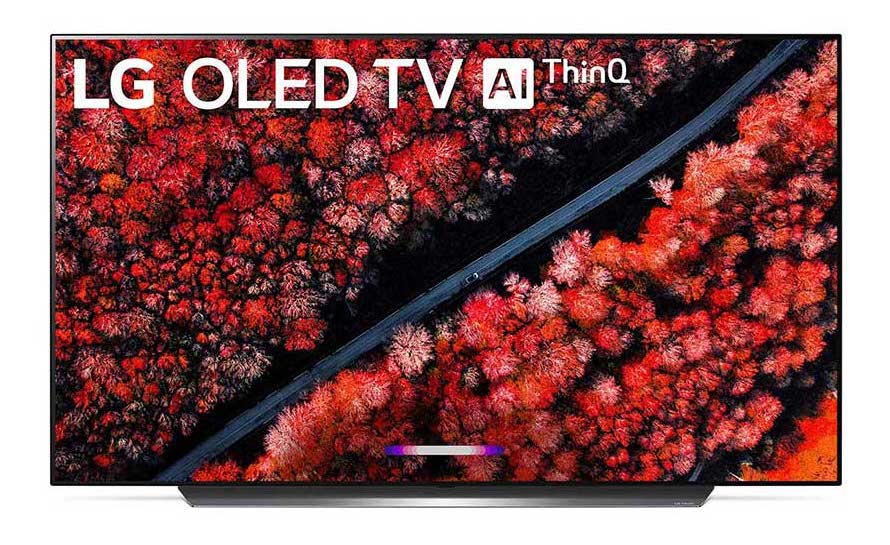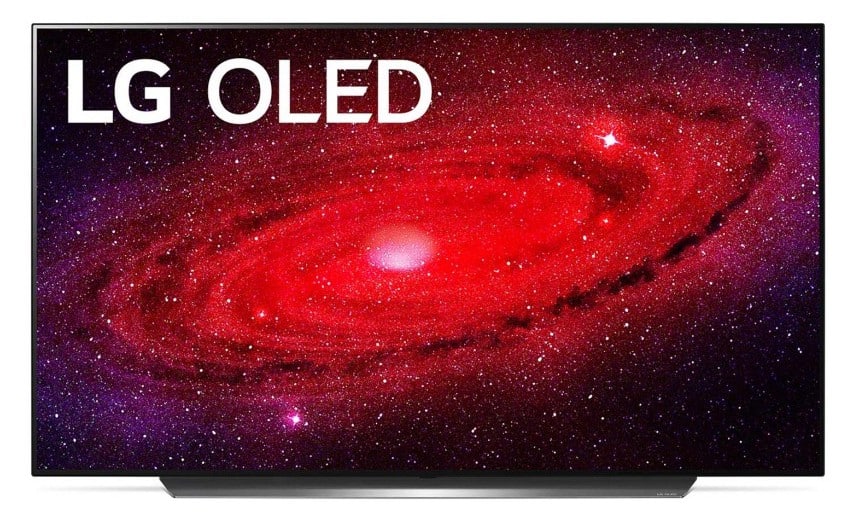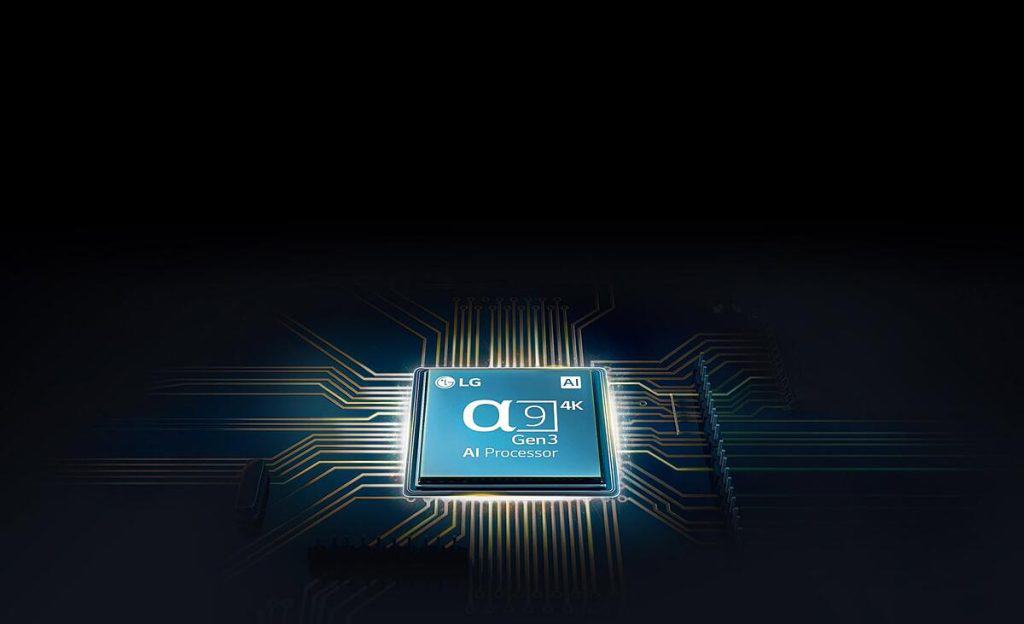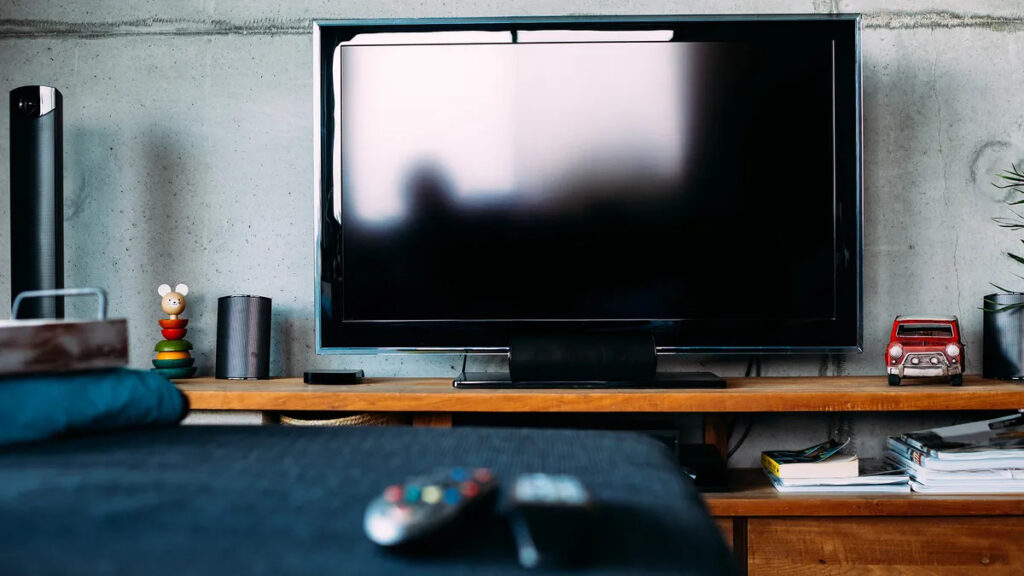The 2020 LG CX model came as the successor of the 2019 C9 model. Boasting a nearly identical design as the C9, the CX also comes with many similar performance properties. In this detailed LG CX vs C9 comparison, we’ll weigh all of the key features to help you decide which TV is the better choice for you.
LG C9 vs CX – Quick Comparison
LG C9

Taking the market by storm in 2019 as “the smartest TV on the planet”, the C9 was undoubtedly one of the best 4K Smart TVs on the consumer market at the time. With terrific picture quality and gorgeous design, the C9 was an immediate success. Now, with some time behind us, the C9 has established itself as a stand-out model worth every penny. The most significant pros and cons of the LG C9 are:
Pros:
- Infinite contrast ratio
- Second Generation α9 Intelligent Processor
- Impressive picture quality
- Very wide viewing angles
Cons:
- No HDR10+ support
- Expensive for a 2019 model
LG CX

Looking at CX’s visual appearance, you might think that LG didn’t make any noticeable changes compared to the 2019 C9 model. However, LG has done a lot of work to implement changes on some of C9’s issues and deliver a better and more optimized Smart TV. The 2020 CX is equally suitable for mixed usage as the C9 but is better than the 2019 model in gaming capabilities. CX’s main advantages and drawbacks are:
Pros:
- Infinite contrast ratio
- Third Generation α9 Intelligent Processor
- Great price for an OLED TV of its characteristics
- Excellent gaming features
Cons:
- No HDR10+ support
- Noticeable bass distortion at higher volume levels
Features Face to Face
Panel Technology
Coming from the same reputable brand, the C9 and the CX use the same OLED panel technology. OLED stands for Organic Light Emitting Diode. OLED panel technology differs from other types of panels primarily because it uses an organic film material between the panel conductors. This technology enables OLED TVs to produce impressive image quality without requiring a backlight.
Many people argue that this makes OLED TVs superior in the current market. OLED TVs are very energy efficient and provide excellent viewing angles and exquisite image quality. However, it’s also important to mention that OLED panels generally have a shorter shelf life than other TV panels.
Image Processor
The C9 and the CX models both employ the help of LG’s α9 Intelligent Processor for all image processing tasks. The only difference is that the C9 uses the second generation α9 processor, while the CX has the third generation α9 processor.

That said, the difference between the two generations doesn’t make a significant impact in terms of overall performance. The α9 Intelligent Processor is known for its smoothness when displaying up to 120 frames per second, powerful frequency-based sharpness enhancer, and noise reduction capabilities.
Motion Technology
The two TVs feature impeccable motion technology capabilities. They have near-instantaneous response times, with minimal blur. Equally as important, although neither TV is flicker-free, there’s no noticeable flickering.
The CX has a 100% response time of under two milliseconds, while the C9’s response time is just over two milliseconds. In both cases, these are astounding numbers and well below the 15-20 milliseconds average. In some instances, these speedy response times can lead to very subtle image stuttering.
Picture Quality
As you’ll see throughout this detailed comparison, the C9 and the CX have many similarities. These similarities are most apparent for most casual users in a direct head-to-head duel of overall picture quality and supported resolutions. With that in mind, the two TVs support the following resolutions:
| Resolution | LG C9 | LG CX |
|---|---|---|
| 4K/120Hz | Yes (Only with an HDMI 2.1 Input) | Yes (Only in Game Mode) |
| 4K/60Hz/4:4:4 | Yes | Yes |
| 4K/60Hz | Yes | Yes |
| 1440p/120Hz | Yes (Native Support) | Yes (Native Support) |
| 1440p/60Hz | Yes | Yes |
| 1080p/120Hz | Yes (Native Support) | Yes (Native Support) |
| 1080p/60Hz/4:4:4 | Yes | Yes |
The supported resolutions between the two TVs are almost mirror images of one another from the table above. The only considerable difference worth keeping in mind is in regards to 4K/120Hz support. In the case of the C9, it requires an HDMI 2.1 input, making it a bit more inconvenient to set up than on the CX, which allows you to run the same resolution by switching to Game Mode.
Contrast Ratio / Black Level
Like all LG’s other OLED TVs, the C9 and the CX have an infinite contrast ratio. The emissive nature of OLED panels allows these two TVs to turn each pixel individually. From this perspective, they provide exceptional performance, resulting in perfect blacks. This characteristic makes either of these two LG models an ideal choice for watching movies and TV shows.
Local Dimming
Neither the C9 nor the CX has a local dimming feature. This is because OLED panels don’t have backlights. Instead, they can dim each pixel individually. With this in mind, both TVs can deliver flawless performance on this front and display bright objects or subtitles without any brightness issues or blooming.
Peak Brightness
Regarding both SDR and HDR brightness, neither the C9 nor the CX delivers an overly impressive performance. The C9 is a bit better in both categories, but still nothing more than decent.
The C9’s SDR peak brightness is just below 450 nits, and the sustained brightness is just over 150 nits. In contrast, the CX has a slightly better SDR peak brightness at around 460 nits and a lower sustained brightness, measuring around 140 nits.
The differences are more noticeably in C9’s favor when comparing the HDR peak brightness performance. The C9’s HDR peak brightness is approximately 850 nits, while the CX’s peak brightness is only about 760 nits.
Color
When it comes to the overall color display ranges, both the C9 and the CX can support a wide color gamut, making them superb for watching HDR content. Color volumes are also identical, so both TVs have the same advantages and disadvantages. More specifically, the C9 and the CX can produce dark and saturated colors but struggle to deliver extremely bright colors.
Viewing Angle
The C9 and the CX both have excellent viewing angles. That said, the C9 has a slight edge in this category, as it can support wider viewing angles before showing any brightness loss or Gamma shifts.
Both TVs are great for a wide seating area arrangement and provide accurate images on angles close to or even higher than 60 degrees. More precisely, the C9 starts showing brightness loss and Gamma shifts at around 67 degrees, and the CX does so in between 55 to 60 degrees.
Reflections / Anti-glare
OLED panels generally deliver outstanding performance in terms of reflection reduction and anti-glare technology. Moreover, the two TVs have a glossy screen finish, meaning they excel at handling ambient light.

The total amount of light reflected off the screen is around 1.5% for both TVs. Overall, the C9 and the CX can overcome even the brightest rooms and provide outstanding reflection handling.
Sound Quality
The two TVs deliver decent sound quality, although the CX slightly outperforms the C9 in this department. Most notably, the CX has better bass than the C9. That said, both TVs can produce a robust sound but still can’t deliver the rumble like some other high-end TVs.
The CX and the C9 also have decent distortion performance. While they deliver top-quality sound at moderate levels, you might notice some sound compression and distortion when listening at maximum volume levels.
Smart TV Platform (Operating System)
The C9 and the CX use the same WebOS smart operating system. This is LG’s proprietary Smart TV platform the company has used since 2009, in various versions. With that in mind, the two TVs we’re comparing on this page don’t use the same OS version. The C9 uses the 4.5 version, while the CX uses the 5.0 version.
The difference between the two versions isn’t a deal-breaker, but the CX does offer a slightly smoother Smart TV platform. In comparison with the CX, the C9 does lag a bit when opening apps. That said, both TVs deliver easy-to-use Smart TV features and have equally as many advanced options.
Additionally, the LG Content Store provides you with a good selection of apps. You can play HDR content on Netflix and YouTube and download popular apps such as Amazon Prime Video, Disney+, Hulu, and others.
Connectivity
Apart from providing top-quality images with dependable motion technology and an adept processor, the TV you pick should also have adequate connectivity properties. When it comes to this, we primarily look at three fundamental aspects. These include the supported wireless technologies, voice assistants, and overall number and quality of inputs.
Inputs
When deciding between the TV models you potentially want to purchase, it’s crucial to consider all the information on supported inputs and outputs. In this sense, the C9 and the CX offer identical traits, so you can’t factor in this aspect when making your decision. To make it clear just how matching the two TVs are in this category, here’s a detailed overview of all supported inputs on the C9 and the CS:
| Input Ports | LG C9 | LG CX |
|---|---|---|
| HDMI Ports | 4 HDMI 2.1 Ports | 4 HDMI 2.1 Ports |
| USB Ports | 3 USB 2.0 Ports | 3 USB 2.0 Ports |
| Digital Optical Audio Out | 1 Port | 1 Port |
| Ethernet Port | Yes | Yes |
Voice Assistants
The C9 and CX use the same LG Magic Remote as all other top-of-the-line LG TV models. In other words, they also employ the same voice assistant. LG’s voice assistant is relatively standard and doesn’t stray far from the norm compared to other Smart TV voice assistants.
You can perform basic tasks through the remote’s built-in microphone. This includes changing the TV inputs, searching for content, opening up apps, or asking general questions about the time and weather.
Wireless Technologies
Smart TVs must keep up with the trends and offer at least some basic wireless technology support in today’s wireless world. In this view, the C9 and CX offer industry-standard Wi-Fi support (2.4 GHz, 5 GHz), more than enough for reliable and stable online streaming.
Both TVs also come with Bluetooth support, allowing you to connect a variety of devices conveniently. Most importantly, you can connect a top-quality soundbar or speaker system to add more audio power and rumble to your viewing experience.
Standout Features
As the CX is just a newer version of the C9, neither model has any significant standout features over the other one. That said, the two TVs share a great set of standout characteristics that set them apart from the competition.
Chief among them are Dolby Vision and Dolby Atmos. With these two features, the C9 and CX can receive higher format signals and deliver excellent performance when viewing Blu-ray content or playing video games.
Both TVs have been certified to work with the most recent NVIDIA graphics cards and are fully G-SYNC compatible. Moreover, the CX also supports FreeSync, a crucial feature to look for if you want to enjoy the benefits of a variable refresh rate when gaming on your Xbox One or PC.
Conclusion
As you can see through the many examples in our LG C9 vs CX comparison, these are two very similar TVs. When deciding between these two TVs, there are no significant deal-breakers or specific standout features that give one model a clear advantage over the other one. These two high-end LG models use the same panel technology, use the same image processor, and deliver nearly identical picture quality properties in a long list of criteria.
Nevertheless, there are some slight differences to keep in mind. The CX offers a slightly smoother Smart TV platform and can deliver a more powerful sound overall. On the other hand, the C9’s most significant advantage over the CX is its ability to provide wider viewing angles.